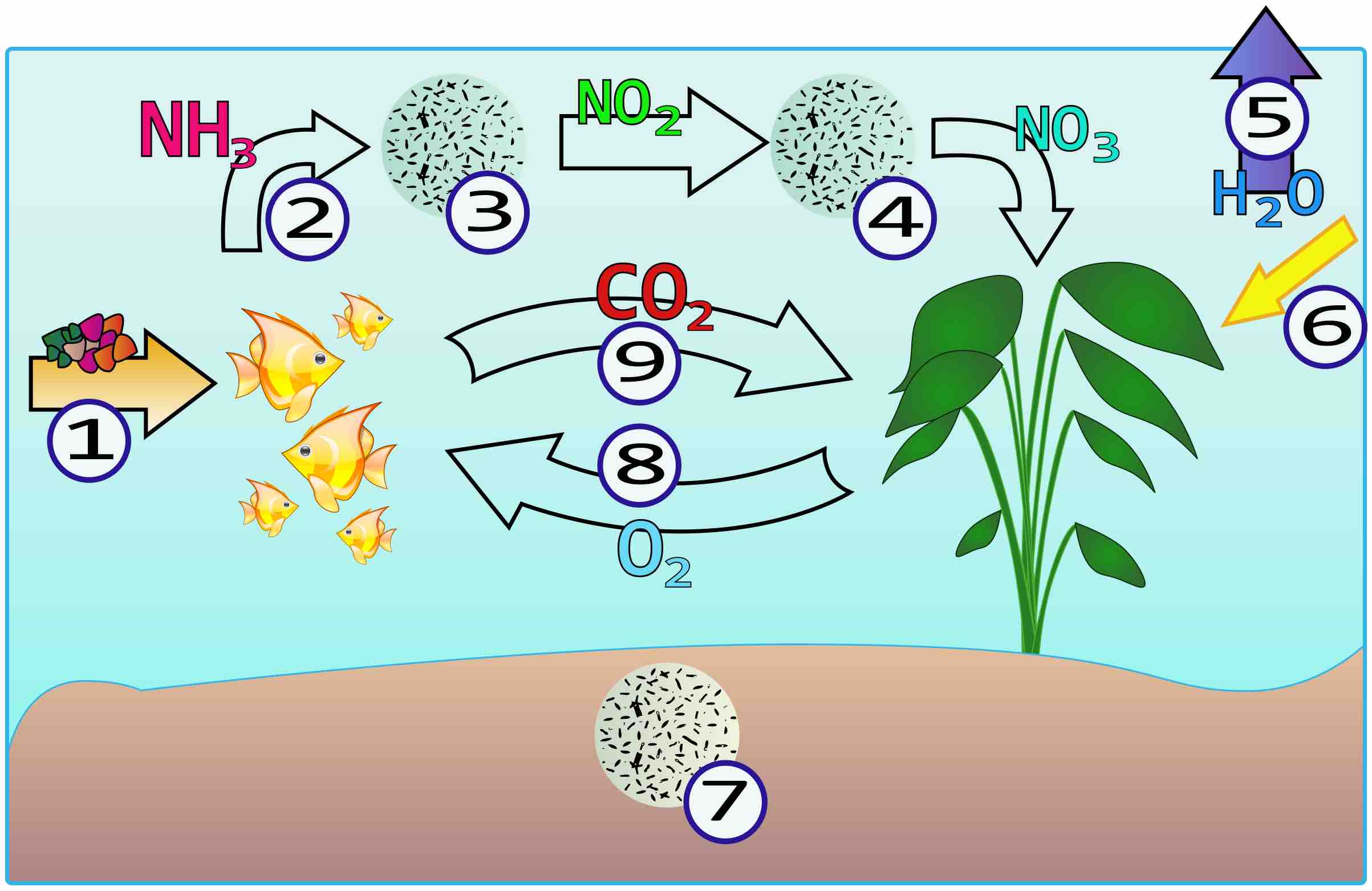Nitrospirae is a phylum of bacteria containing only one class: Nitrospira, which itself contains one order: Nitrospirales, and one family: Nitrospiraceae.
However, it includes multiple genera, the largest of which is Nitrospira. The first member of this phylum, Nitrospira marina, was discovered in 1986 by Watson et al., isolated from the Gulf of Maine. The second member of this phylum, Thermodesulfovibrio yellowstonii, was discovered in 1994. The third, Nitrospira moscoviensis, was discovered in 1995 from a corroded iron pipe in a Moscow heating system. It is a Gram-negative nitrite-oxidizing organism with a helical to vibroid morphology 0.9-2.2 x 0.2-0.4 micrometers in size.
Some nitrospirae species perform important functions in the Nitrogen Cycle :

Nitrogen cycle in aquarium
Legend: (1) Addition of food and nutrients, (2) Production of urea and ammonia by fish, (3) Ammonia is converted to nitrites by beneficial nitrosomonas bacteria, (4) Nitrites are converted to nitrates by beneficial nitrospira bacteria. Less toxic nitrates are removed by plants and periodic water changes. (5) Evaporation. (6) Light. (7) Soil. (8) O2 produced by plants. (9) CO2 produced by fish.
The Nitrogen Cycle describes the changes in nitrogenous compounds in the environment. Because many of them are toxic, it is important to know something about this cycle. Luckily, these compounds are converted to less and less toxic forms through this Nitrogen Cycle.
To simplify, if you start with your organisms, they release a compound, ammonia, as a waste product or a product of decomposition. Ammonia is both quite toxic and dangerous. By a process known as nitrification, bacteria convert these waste products to less toxic forms. These bacteria live in aerobic conditions and benefit from the presence of oxygen.
First the ammonia is converted to nitrites by Nitrosomonas; this compound is still toxic. Next, nitrites are converted to nitrates by Nitrobacter or Nitrospira. Nitrates are much less toxic compared to ammonia and nitrite. In an environment with a healthy colony of these nitrifying bacteria, ammonia and nitrites levels will reach zero.
Deferribacter is a genus in the phylum Deferribacteres (Bacteria).The genus contains 4 species:
- D. abyssi
- D. autotrophicus
- D. desulfuricans
- D. thermophilus